| View previous topic :: View next topic |
| Author |
Message |
Manuel Mesa

Joined: 23 Dec 2011
Posts: 171
Location: Teruel



|
 Posted: Feb 21, 2018 11:57 Post subject: A new find: Hoganite from Morocco Posted: Feb 21, 2018 11:57 Post subject: A new find: Hoganite from Morocco |
|
|
Today I would like to inform you about the presence of hoganite in the paragenesis of the Bou Nahas Mine (Morocco), and that I think this mineral will be talked about a lot and will be a point of discussions in the next minerals shows
In March 2017 a well-known spanish dealer from Zaragoza acquired some peculiar copper samples in his annual trip to Morocco. I had the opportunity to get a sample, and due to my great ignorance of what I had in hand, I sent it to analyze to Joy Desor in Germany.
These samples were P-XRD, Raman and SEM-EDS analysed and the blue crystals have turned out to be Hoganite, a very rare mineral.
Samples seem to be authentic and natural as specimens are covered by malachite in fibrous crystals
I attach some photos.
Enjoy!
Manuel Mesa
| Mineral: | Hoganite |
| Locality: | | Bou Nahas Mine, Oumjrane mining area, Alnif Commune, Tinghir Province, Drâa-Tafilalet Region, Morocco |  |
|
| Dimensions: | 65 x 49 mm |
| Description: |
|
| Viewed: |
35615 Time(s) |
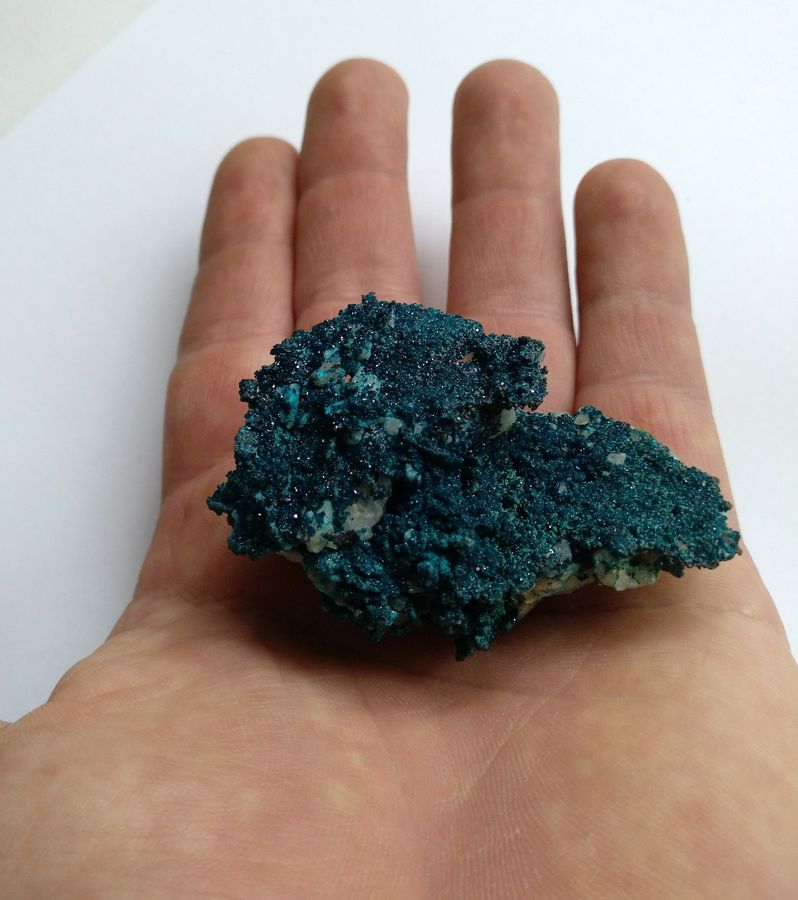
|
| Mineral: | Hoganite |
| Locality: | | Bou Nahas Mine, Oumjrane mining area, Alnif Commune, Tinghir Province, Drâa-Tafilalet Region, Morocco |  |
|
| Dimensions: | Field of view: 3.6 mm |
| Description: |
| Photo: Fran García Alacid |
|
| Viewed: |
35444 Time(s) |
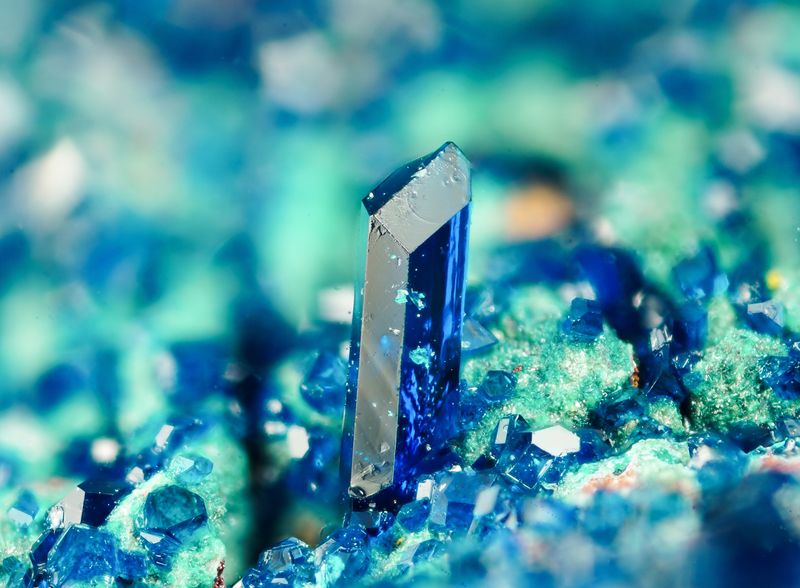
|
| Mineral: | Hoganite |
| Locality: | | Bou Nahas Mine, Oumjrane mining area, Alnif Commune, Tinghir Province, Drâa-Tafilalet Region, Morocco |  |
|
| Dimensions: | Field of view: 3.5mm |
| Description: |
| Photo: Fran García Alacid |
|
| Viewed: |
35530 Time(s) |
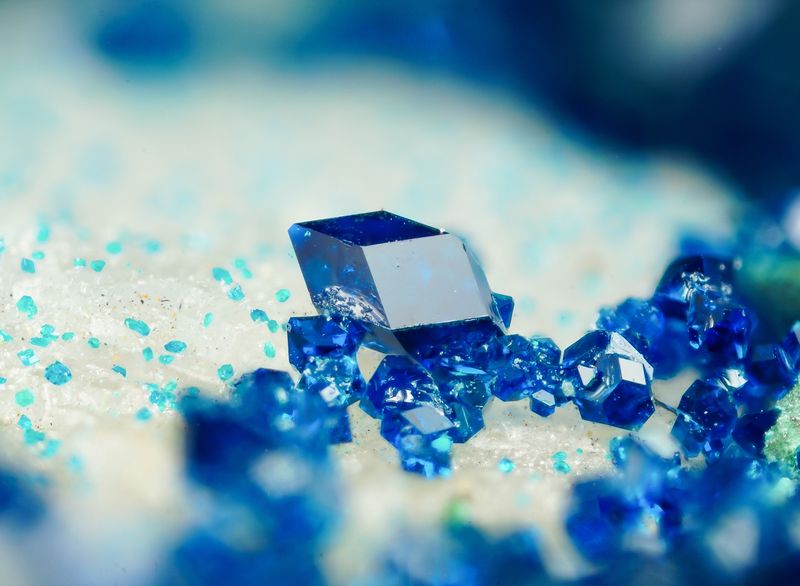
|
| Mineral: | Hoganite |
| Locality: | | Bou Nahas Mine, Oumjrane mining area, Alnif Commune, Tinghir Province, Drâa-Tafilalet Region, Morocco |  |
|
| Dimensions: | Field of view: 3.7mm |
| Description: |
| Photo: Fran García Alacid |
|
| Viewed: |
35483 Time(s) |
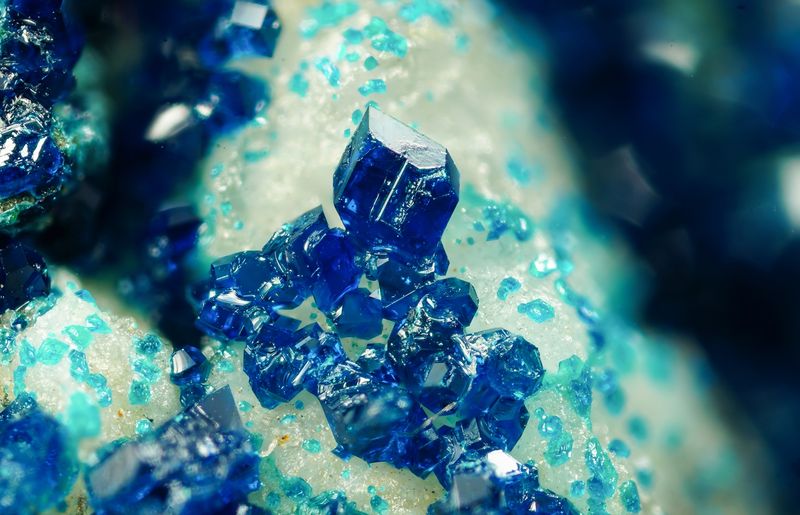
|
| Mineral: | Hoganite |
| Locality: | | Bou Nahas Mine, Oumjrane mining area, Alnif Commune, Tinghir Province, Drâa-Tafilalet Region, Morocco |  |
|
| Dimensions: | Field of view: 2.5 mm |
| Description: |
| Photo: Fran García Alacid |
|
| Viewed: |
35492 Time(s) |
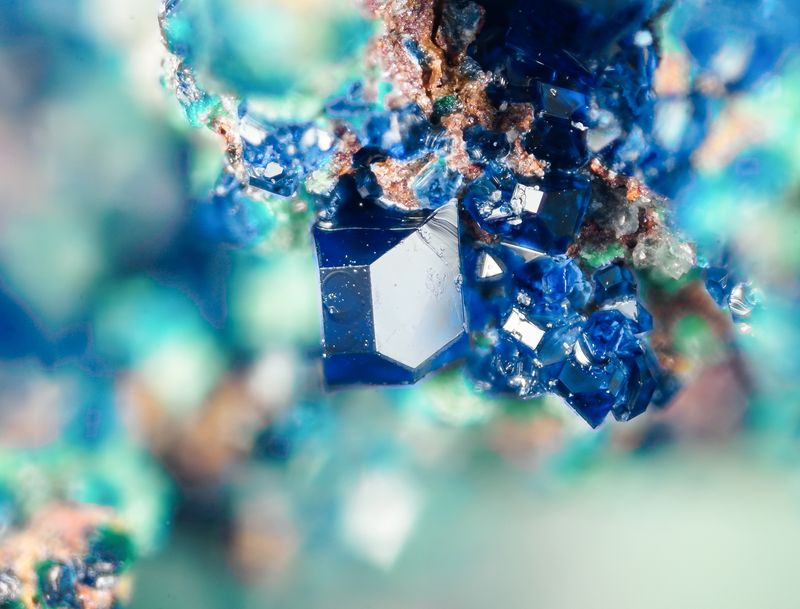
|
| Mineral: | Hoganite |
| Locality: | | Bou Nahas Mine, Oumjrane mining area, Alnif Commune, Tinghir Province, Drâa-Tafilalet Region, Morocco |  |
|
| Dimensions: | Field of view: 3.2 mm |
| Description: |
| Photo: Fran García Alacid |
|
| Viewed: |
35922 Time(s) |
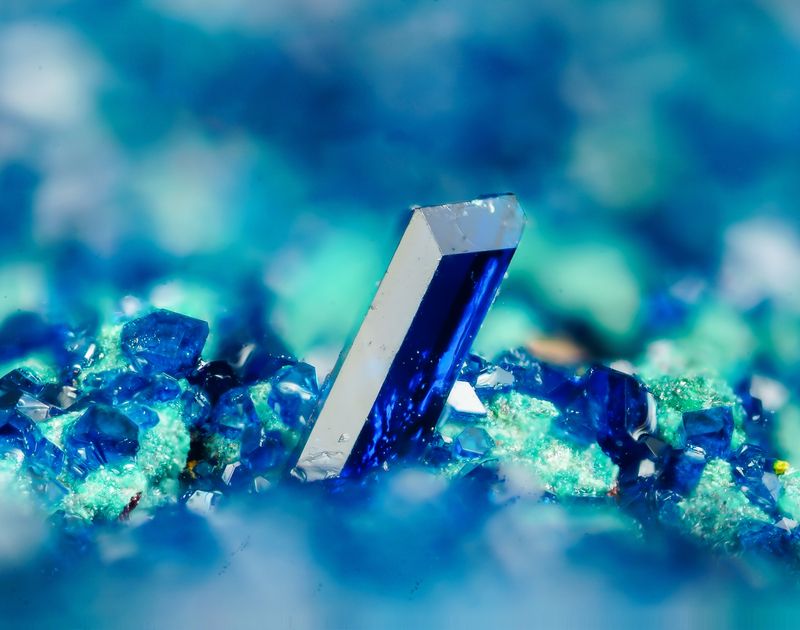
|
|
|
| Back to top |
|
 |
Manuel Mesa

Joined: 23 Dec 2011
Posts: 171
Location: Teruel



|
 Posted: Feb 21, 2018 12:03 Post subject: Re: A new find: Hoganite from Morocco Posted: Feb 21, 2018 12:03 Post subject: Re: A new find: Hoganite from Morocco |
|
|
And of course, I attach the analysis:
| Description: |
|
| Viewed: |
35499 Time(s) |
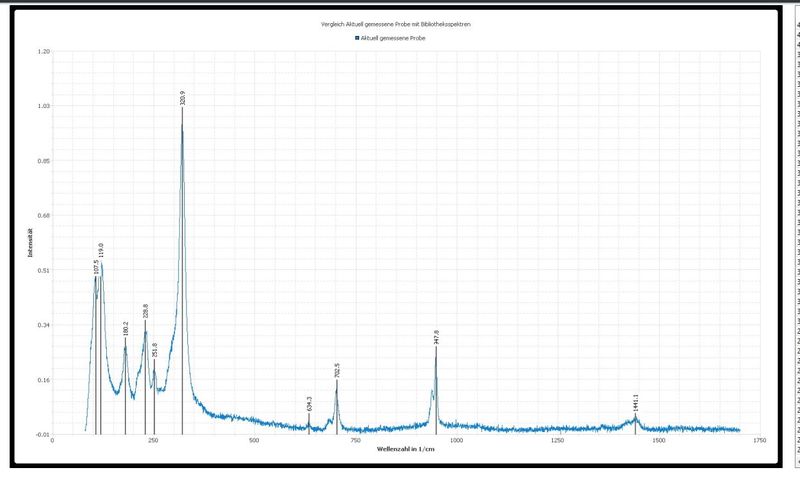
|
| Description: |
|
| Viewed: |
35494 Time(s) |
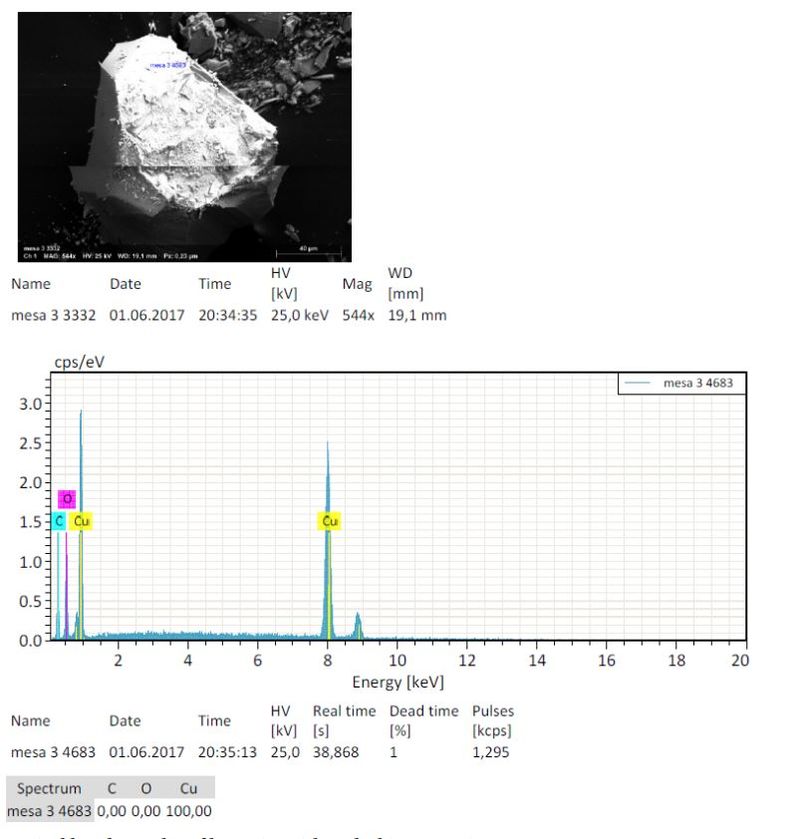
|
| Description: |
|
| Viewed: |
35490 Time(s) |
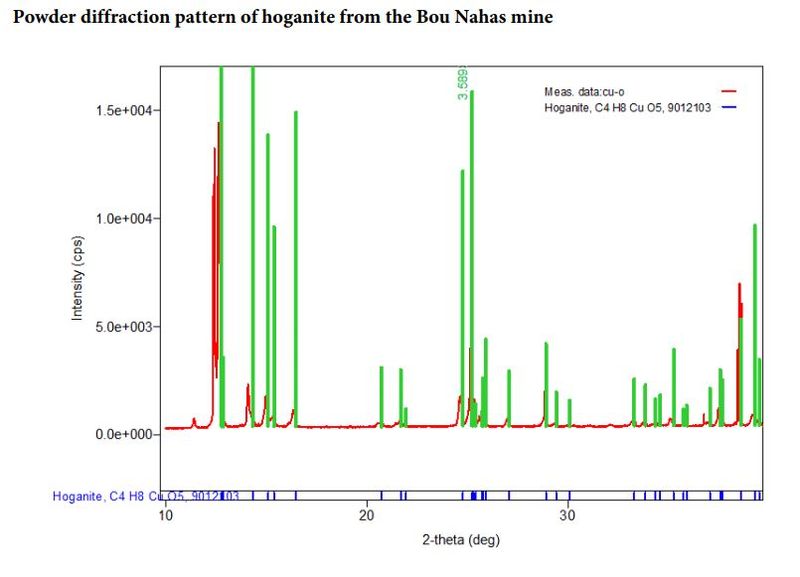
|
| Description: |
|
| Viewed: |
35498 Time(s) |
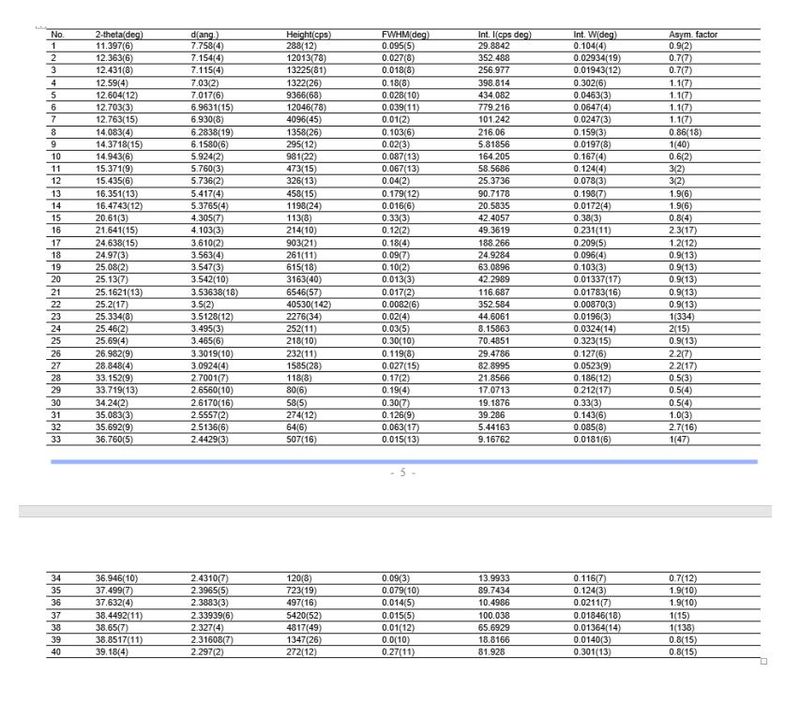
|
|
|
| Back to top |
|
 |
Pete Modreski
Site Admin

Joined: 30 Jul 2007
Posts: 710
Location: Denver, Colorado



|
 Posted: Feb 21, 2018 12:43 Post subject: Re: A new find: Hoganite from Morocco Posted: Feb 21, 2018 12:43 Post subject: Re: A new find: Hoganite from Morocco |
|
|
| I had to look up hoganite to see what it was. So, it's copper acetate monohydrate. Given the unusual nature of the mineral and the abundance of it shown in these specimens (vs. the scarcity of it at previously reported localities, and the ease of crystallizing this artificially), it might be well to look for a detailed description of the exact mode of occurrence in this mine or mine dump before uncritically accepting this as a natural occurrence. The type locality occurrence (along with that of the related mineral, paceite) at Broken Hill, NSW was described by Hibbs et al. in Mineralogical Magazine in 2002:( https://pubs.geoscienceworld.org/minmag/article/66/3/459/140135/hoganite-and-paceite-two-new-acetate-minerals-from) as "isolated crystals embedded in ferruginous gossan from the Potosi Pit, Broken Hill, New South Wales, Australia... in the vicinity of a mass of decomposing leaf litter and carried goethite, hematite, quartz, linarite, malachite, azurite, cuprian smithsonite and cerussite. ... The minerals reported here are of natural origin, the acetate ion having been furnished in this case as a result of the decomposition of leaf litter and possibly mine timbers in the immediate vicinity of the recovered material."
|
|
| Back to top |
|
 |
alfredo
Site Admin

Joined: 30 Jan 2008
Posts: 1018



|
 Posted: Feb 21, 2018 13:02 Post subject: Re: A new find: Hoganite from Morocco Posted: Feb 21, 2018 13:02 Post subject: Re: A new find: Hoganite from Morocco |
|
|
Hoganite crystals can also form as the accidental result of cleaning minerals with vinegar. Given the richness of these specimens, I suspect that's what might have happened here. Fibrous malachite on the hoganite could help prove that this was not due to vinegar treatment, but then the malachite should be analyzed too, to make sure it's not really brochantite or other non-carbonate.
(Reminds me of some colorless rod-like crystals that looked like achroite tourmalines on the famous Argentine hematite crystals. They turned out to be Pb citrate! ...the result of trying to clean off ugly crusts of anglesite with citric acid.)
|
|
| Back to top |
|
 |
Manuel Mesa

Joined: 23 Dec 2011
Posts: 171
Location: Teruel



|
 Posted: Feb 21, 2018 13:14 Post subject: Re: A new find: Hoganite from Morocco Posted: Feb 21, 2018 13:14 Post subject: Re: A new find: Hoganite from Morocco |
|
|
Pete Modreski, Alfredo
You're right, it's very strange. But keep in mind that the samples have been purchased directly from the miners in Morocco. They do not use acetic acid to clean the minerals. They use hydrochloric acid.
Where does the acetate ion come from? I do not know. But we have observed that some samples are presented with fibrous malachite crystals. I think it is incompatible with the use of acids. So both Joy Desor and us, we believe they are natural.
Thanks Peter
Manuel Mesa
| Mineral: | Hoganite with malachite |
| Locality: | | Bou Nahas Mine, Oumjrane mining area, Alnif Commune, Tinghir Province, Drâa-Tafilalet Region, Morocco |  |
|
| Description: |
|
| Viewed: |
35450 Time(s) |
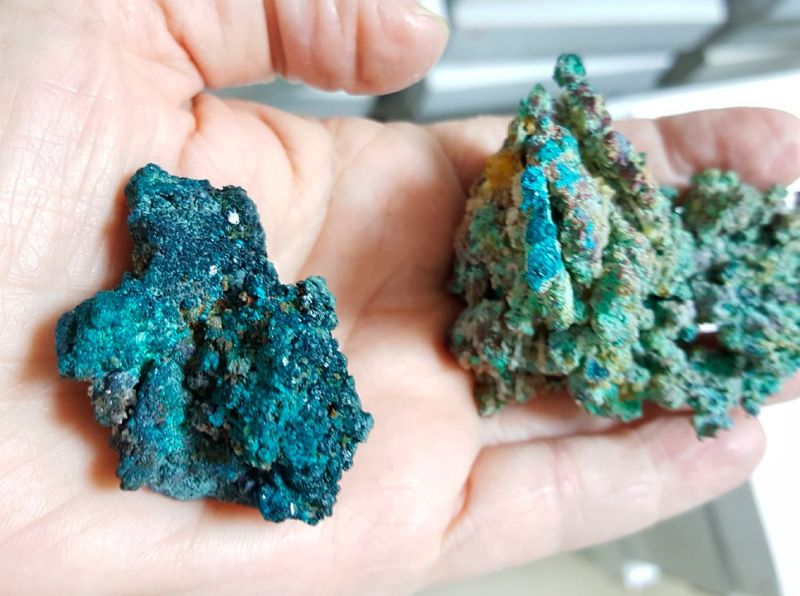
|
|
|
| Back to top |
|
 |
Cesar M. Salvan
Site Admin
Joined: 09 Jun 2008
Posts: 127
Location: Alcalá de Henares



|
 Posted: Feb 21, 2018 21:30 Post subject: Re: A new find: Hoganite from Morocco Posted: Feb 21, 2018 21:30 Post subject: Re: A new find: Hoganite from Morocco |
|
|
Some months ago, I received for analysis a sample of native copper from this locality covered by crystals similar to those in discussion here. The elemental analysis showed carbon and copper, but the Raman spectroscopy was inconclusive and pointed out to an hydroxy-carbonate.
As you can see in the SEM picture, some crystals are hollow and covered by a carbonation crust. We considered hoganite but we didn't take further actions with the sample, because we considered the crystals fake, fabricated or accidentally grown as a result of specimen's cleaning.
Acetate is formed in decaying organic matter and could be found as a result of decomposition of wood and other organic materials in old mines or organic-rich deposits.
Metallic acetates tend to grow beautiful crystals very easily (see the image I attached, it is a straightforward experiment). Also, acetate is quite unstable in a natural setting (free acetate is like candy in a primary school...favorite food for soil bacteria and, remember, divalent metal acetates are highly soluble in water); copper acetate moreover is carbonated slowly, forming 'verdigris' or even malachite.
To have a stable and significant amount of fresh acetate crystals, it is necessary a rich bacterial ecosystem and proximity to the supply. The natural acetates usually were found in small or anecdotal amounts in the vicinity of decaying or fermenting organic materials. This is because acetate, produced by bacterial fermentation, is readily consumed by other prokaryotes in bacterial consortium. This is why acetate minerals are quite rare, specially considering that acetate is the most abundant organic chemical on Earth surface. Another example: the calcium acetate has never been described as mineral, despite of its easy formation. All findings of calcium acetate turned out to be man-made.
So, months ago we discarded the sample as man-made, and, looking the beautiful pictures presented here, I think it is highly unlikely that fresh, well crystallized and abundant copper acetate could be formed in that setting without an abundant (and very recent) source of acetate. Also, acetic acid is a classic reagent to clean native copper....so....it is reasonable to consider the artificial origin.
In my opinion these specimens are man-made (intentional or accidental, by crystallization of acetate over specimens let immersed in solution for a few days, it is not my role to judge it). Of course, there are chances of a natural origin, but, in my opinion, it is unlikely. If a natural (considering natural the unintended formation in old mining remains) origin is demonstrated, these would be the best specimens of hoganite ever. As far as I know, aside of the observation of matrices and accompanying phases, the way to determine the natural/artificial origin of hoganite in a specimen-based approach, would be the determination of delta13C: if natural, carbon is of bacterial origin and its signature is different to those of industrial acetic acid or plant-derived vinegars. In my opinion, without compelling evidence (as unambiguous delta13C, together with the study of the exact context of the samples) I would think that the samples are artificial.
The samples shown here makes our samples make sense, as it seems that our sample is more "aged", with carbonated crystals. Our first impression with our sample was that someone tried to clean the copper in acetic acid solution and I think the work presented here confirms that. Whatever is the end of the story, the pictures and crystals are very beautiful.
| Mineral: | Hoganite |
| Locality: | | Bou Nahas Mine, Oumjrane mining area, Alnif Commune, Tinghir Province, Drâa-Tafilalet Region, Morocco |  |
|
| Dimensions: | FOV 3 mm |
| Description: |
| Unconfirmed hoganite, with surface altered to verdigris (basic copper carbonate). |
|
| Viewed: |
35342 Time(s) |
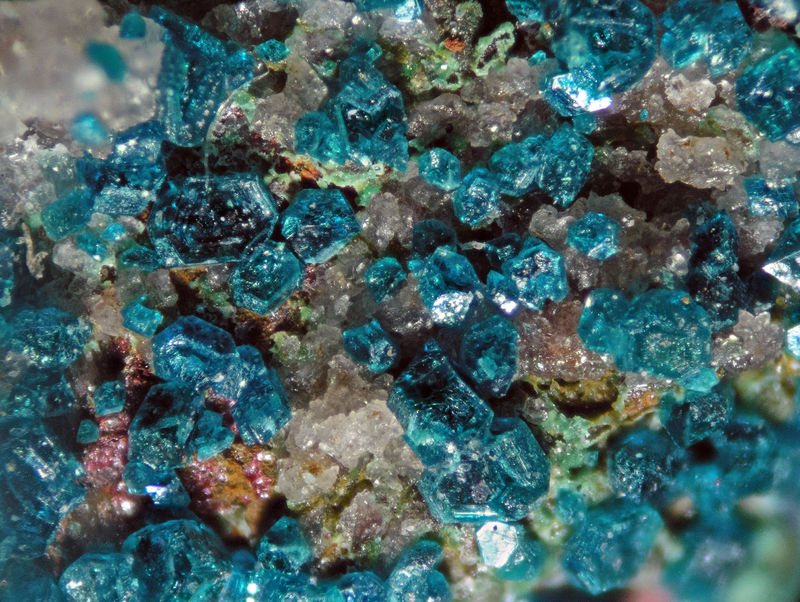
|
| Mineral: | Hoganite |
| Locality: | | Bou Nahas Mine, Oumjrane mining area, Alnif Commune, Tinghir Province, Drâa-Tafilalet Region, Morocco |  |
|
| Dimensions: | FOV 3 mm |
| Description: |
| Unconfirmed hoganite, with surface altered to verdigris (basic copper carbonate). |
|
| Viewed: |
35691 Time(s) |
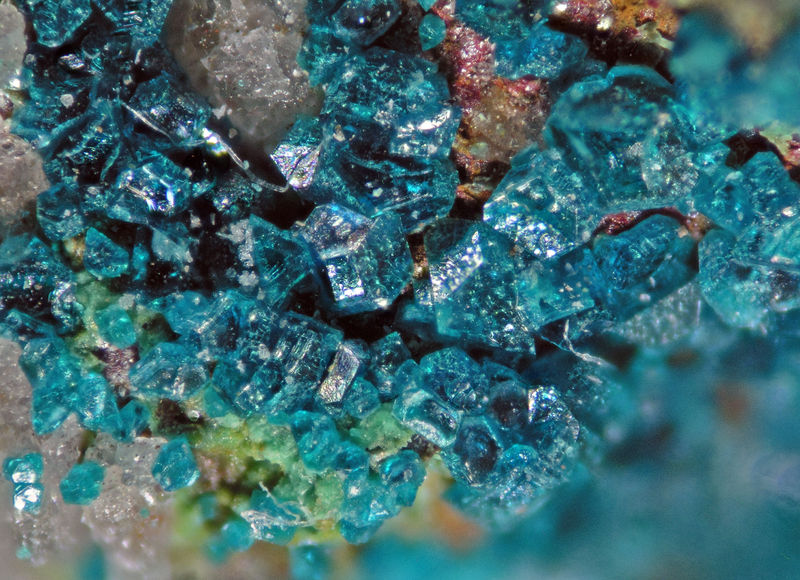
|
| Locality: | | Bou Nahas Mine, Oumjrane mining area, Alnif Commune, Tinghir Province, Drâa-Tafilalet Region, Morocco |  |
|
| Description: |
| SEM image of the crystals, showing the surface alteration and hollow crystals. |
|
| Viewed: |
35284 Time(s) |
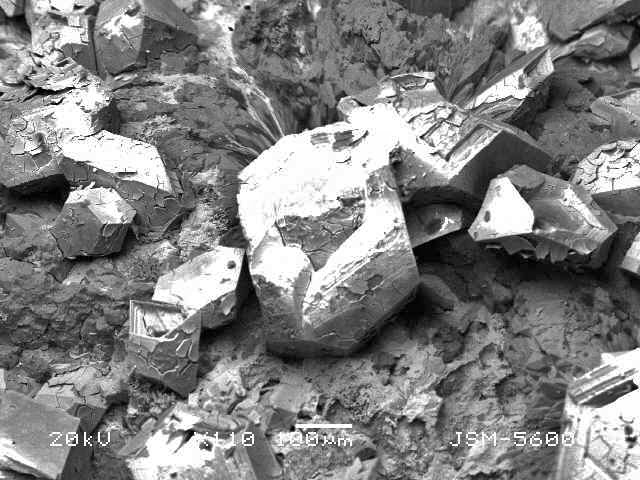
|
| Description: |
| The formation of synthetic hoganite is extremely easy. Just let dry an acetic acid solution with a 1 cent coin inside. Adding drops of H2O2 will accelerate the process. |
|
| Viewed: |
35291 Time(s) |
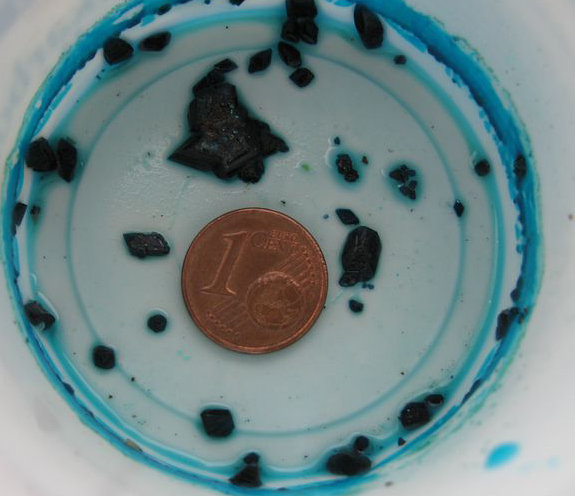
|
|
|
| Back to top |
|
 |
Enrique Llorens

Joined: 02 Jun 2011
Posts: 410



|
 Posted: Feb 22, 2018 03:32 Post subject: Re: A new find: Hoganite from Morocco Posted: Feb 22, 2018 03:32 Post subject: Re: A new find: Hoganite from Morocco |
|
|
For lovers of Moroccan minerals, it is a pleasure to read and see a post of this highest level.
Thank you gentlemen Mesa and Salvan.
|
|
| Back to top |
|
 |
Cesar M. Salvan
Site Admin
Joined: 09 Jun 2008
Posts: 127
Location: Alcalá de Henares



|
 Posted: Feb 26, 2018 22:25 Post subject: Re: A new find: Hoganite from Morocco Posted: Feb 26, 2018 22:25 Post subject: Re: A new find: Hoganite from Morocco |
|
|
To shed light on this topic and apply the Ockham's Razor to the Hoganite question, I show you the result of a very simple experiment:
Just prepare a solution with a piece of copper metal in diluted acetic acid (white vinegar for cleaning works great) to which hydrogen peroxide was added until abundant oxygen bubbles on the copper piece. Alternatively, you can dissolve copper sulfate or copper chloride in the white vinegar. I preferred the first method in order to get pure copper acetate.
Let the mixture stand for a couple of days, evaporating. You can immerse different pieces of natural samples, as native copper, rocks..whatever that will give a 'natural look' to the final 'hoganite', if you want to fool with newbies.
I present here several pictures with the beautiful results of this simple experiment. Compare the first picture of my "synthetic hoganite" with the previous picture I posted here of the sample we analyzed from Bou Nahas, and extract your own conclusions.
| Mineral: | Hoganite |
| Description: |
Cesar Menor-Salvan's Laboratory
FOV 3 mm
Synthetic hoganite on copper metal |
|
| Viewed: |
34854 Time(s) |
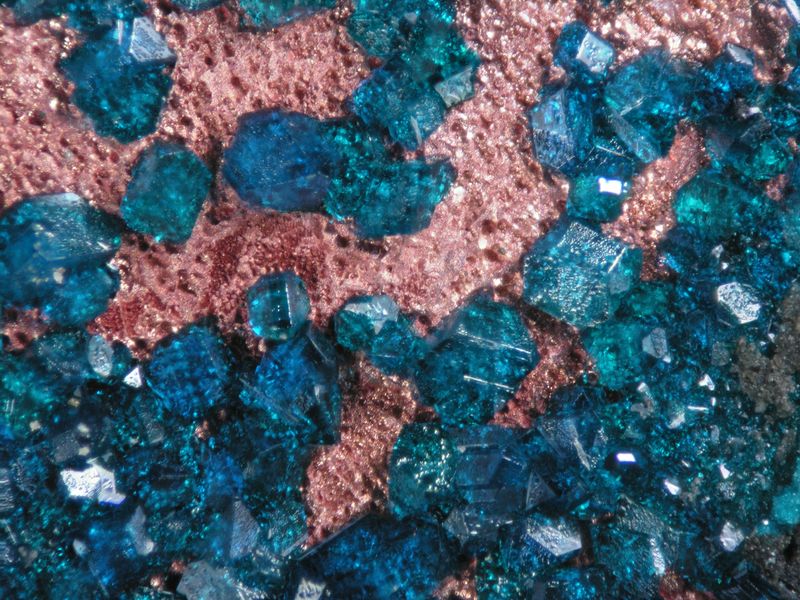
|
| Mineral: | Hoganite (synthetic) |
| Dimensions: | FOV 5 mm |
| Description: |
|
| Viewed: |
34919 Time(s) |
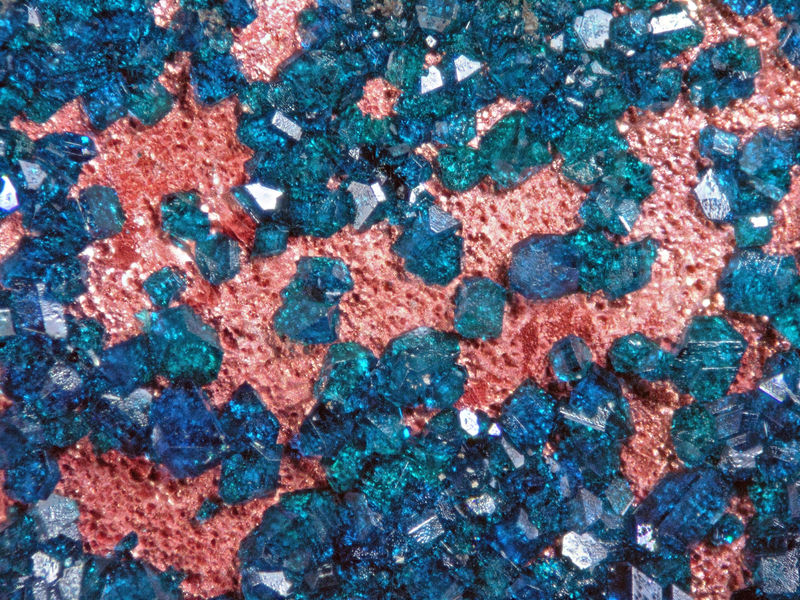
|
| Mineral: | Hoganite (synthetic) |
| Dimensions: | FOV 4 mm |
| Description: |
|
| Viewed: |
35027 Time(s) |
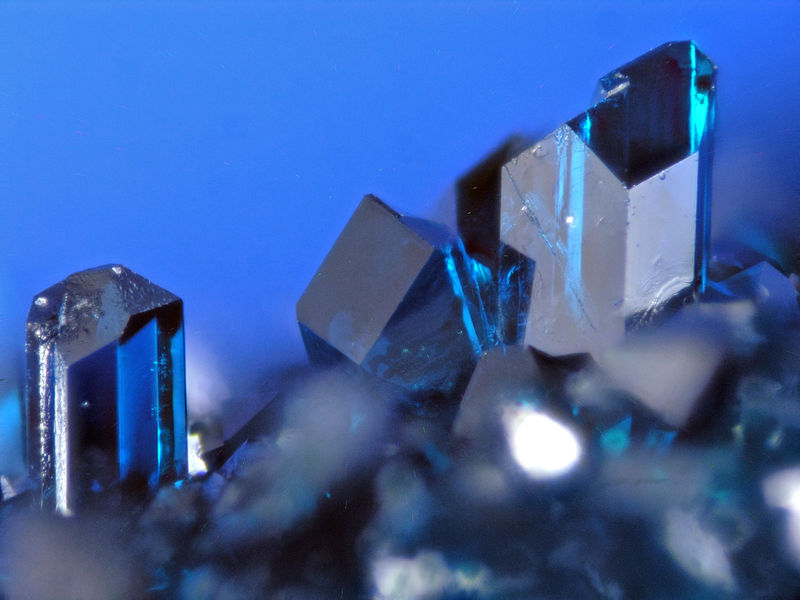
|
| Mineral: | Hoganite (synthetic) |
| Dimensions: | FOV 4 mm |
| Description: |
|
| Viewed: |
34923 Time(s) |
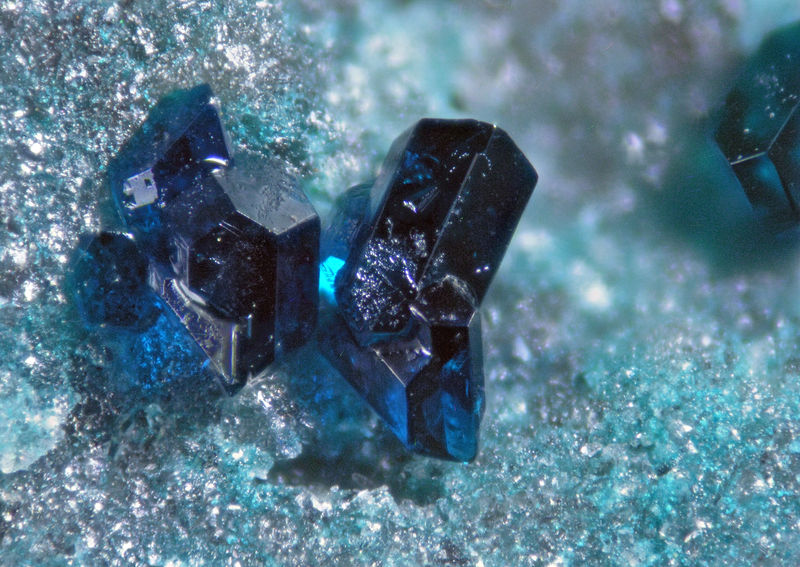
|
| Mineral: | Hoganite (synthetic) |
| Dimensions: | FOV 3 mm |
| Description: |
|
| Viewed: |
35006 Time(s) |
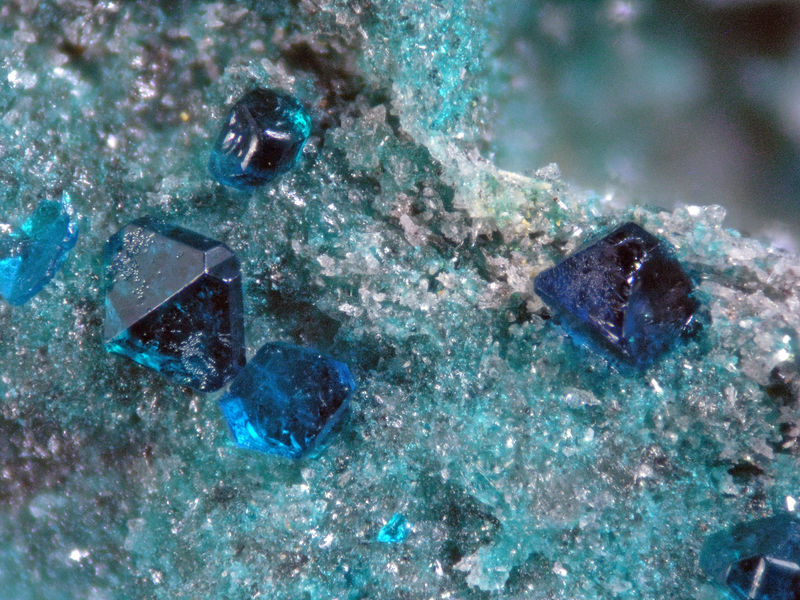
|
| Mineral: | Hoganite (synthetic) |
| Dimensions: | FOV 2 mm |
| Description: |
|
| Viewed: |
34925 Time(s) |
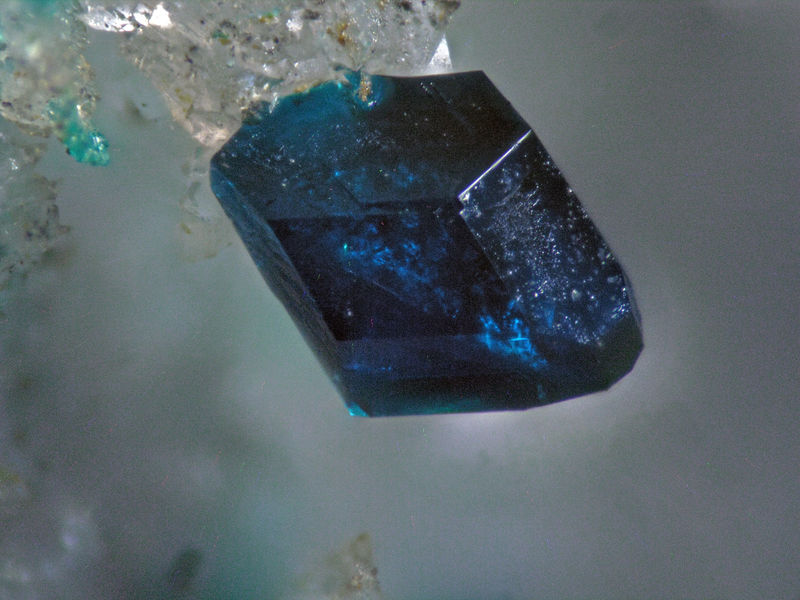
|
| Mineral: | Hoganite (synthetic) |
| Description: |
| Fabricated 'hoganite' using a random mineral piece immersed in copper saturated white vinegar and letting dry for a couple of days |
|
| Viewed: |
34900 Time(s) |
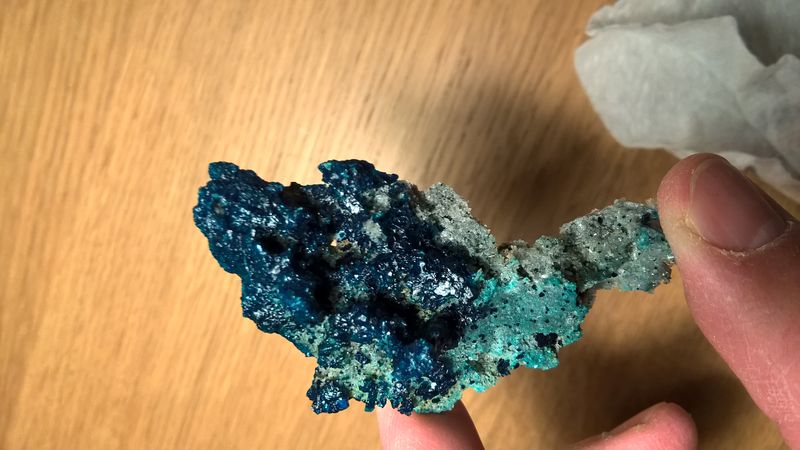
|
| Mineral: | Hoganite (synthetic) |
| Description: |
| Chunk of copper metal covered by hoganite, formed after letting stand the metal immersed in white vinegar+H2O2 for 3 days. |
|
| Viewed: |
34888 Time(s) |
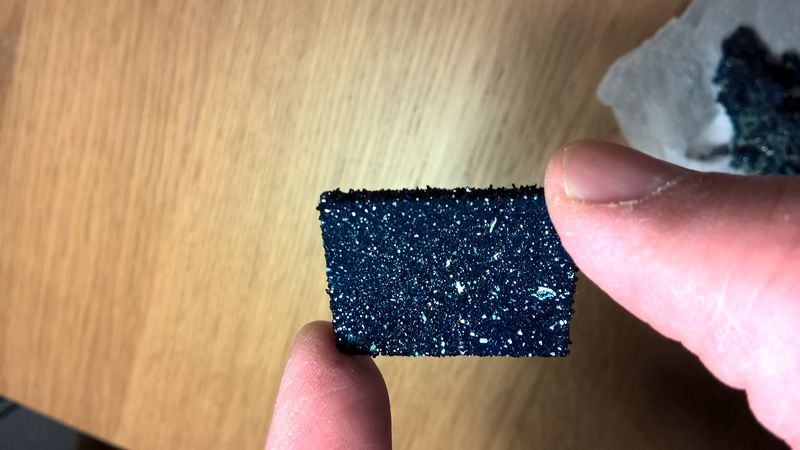
|
|
|
| Back to top |
|
 |
Manuel Mesa

Joined: 23 Dec 2011
Posts: 171
Location: Teruel



|
 Posted: Feb 27, 2018 02:34 Post subject: Re: A new find: Hoganite from Morocco Posted: Feb 27, 2018 02:34 Post subject: Re: A new find: Hoganite from Morocco |
|
|
Cesar, nice experiment !!
But I want to point out that some samples have fibrous malachite crystals, how did they form with the hoganite?
Manuel Mesa
|
|
| Back to top |
|
 |
James Catmur
Site Admin

Joined: 14 Sep 2006
Posts: 1489
Location: Cambridge



|
 Posted: Feb 27, 2018 03:47 Post subject: Re: A new find: Hoganite from Morocco Posted: Feb 27, 2018 03:47 Post subject: Re: A new find: Hoganite from Morocco |
|
|
| alfredo wrote: | | ..... the malachite should be analyzed too, to make sure it's not really brochantite or other non-carbonate. |
|
|
| Back to top |
|
 |
Manuel Mesa

Joined: 23 Dec 2011
Posts: 171
Location: Teruel



|
 Posted: Feb 27, 2018 07:37 Post subject: Re: A new find: Hoganite from Morocco Posted: Feb 27, 2018 07:37 Post subject: Re: A new find: Hoganite from Morocco |
|
|
| James wrote: | | alfredo wrote: | | ..... the malachite should be analyzed too, to make sure it's not really brochantite or other non-carbonate. |
|
James, Alfredo
I attach the analysis executed by Joy Desor that confirms the presence of malachite in the samples with hoganite.
Now, the ball lies in your court.
Honestly, the samples may not be natural but I still have doubts.
Manuel Mesa
| Description: |
|
| Viewed: |
34756 Time(s) |
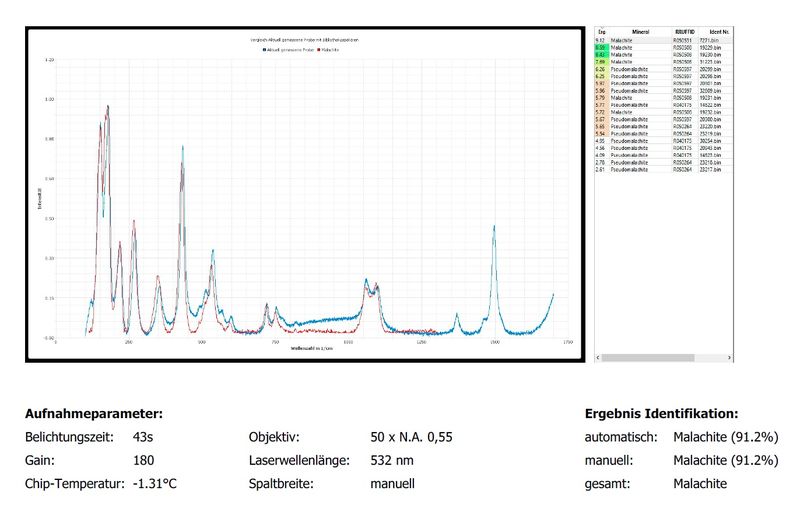
|
|
|
| Back to top |
|
 |
alfredo
Site Admin

Joined: 30 Jan 2008
Posts: 1018



|
 Posted: Feb 27, 2018 11:02 Post subject: Re: A new find: Hoganite from Morocco Posted: Feb 27, 2018 11:02 Post subject: Re: A new find: Hoganite from Morocco |
|
|
| The next thing we need to find out is whether the malachite is older or younger than the hoganite. If older, it could be that there was once more malachite and it has been partly etched away by acetic acid. If younger, it's possible that the malachite is a product of alteration of hoganite. Close up photos of the contact between the two species might help. Even if perhaps the hoganite was really the product of reaction with natural wood-derived acetic acid in the mine, the association with malachite is still problematic and needs some explaining.
|
|
| Back to top |
|
 |
James Catmur
Site Admin

Joined: 14 Sep 2006
Posts: 1489
Location: Cambridge



|
 Posted: Feb 27, 2018 14:52 Post subject: Re: A new find: Hoganite from Morocco Posted: Feb 27, 2018 14:52 Post subject: Re: A new find: Hoganite from Morocco |
|
|
| I think we have to assume that they are not natural.
|
|
| Back to top |
|
 |
Joan Rosell
Joined: 10 Jul 2014
Posts: 3
Location: El Prat de Llobregat - Barcelona


|
 Posted: Feb 28, 2018 08:16 Post subject: Re: A new find: Hoganite from Morocco Posted: Feb 28, 2018 08:16 Post subject: Re: A new find: Hoganite from Morocco |
|
|
There is another important point... When I bought some of these "curious" specimens in the Munchen mineral show 2017, seller offered mixed samples of normal copper, carbonated ones and only few with hoganite crystals, but not asking more money for these special ones... For me that could be the fact to say that these specimens has not been synthezized specifically to be sold as "new" rare species from Oumjrane, probably by some chance.
Checking composition in mindat website, we observed that only few carbonates coincide, but no one with this color and crystal shape. Only one had similar color and shape, an organic compound, a hydrated copper acetate called hoganite. We proceed to identify crystals using Raman spectroscopy. Results were totally consistent with hoganite Raman parameters published by A. Musumeci and R. L. Frost (2007)[available online].
They are disposed on the copper and "limonite" matrix and accompanied by light green globular aggregates of a unidentified copper chloride (SEM-EDS) similar to atacamite (?). These chloride is partially covering hoganite crystals.
Frost, R.L., Musumeci, A. (2007): "A spectroscopic and thermoanalytical study of the mineral Hoganite". Spectrochimica Acta Part A: Molecular and Biomolecular Spectroscopy. 67(1):48-57.
More info on:
https://rosellminerals.blogspot.com.es/2018/01/hoganite-rare-hydrated-copper-acetate.html
| Mineral: | Hoganite |
| Locality: | | Bou Nahas Mine, Oumjrane mining area, Alnif Commune, Tinghir Province, Drâa-Tafilalet Region, Morocco |  |
|
| Description: |
| Hoganite on copper... Foto Joan Rosell |
|
| Viewed: |
34554 Time(s) |
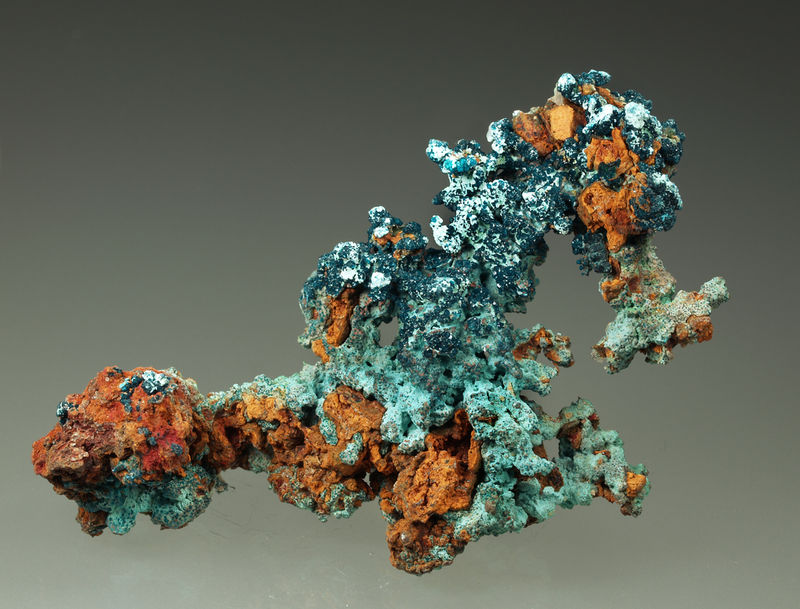
|
| Description: |
|
| Viewed: |
34364 Time(s) |
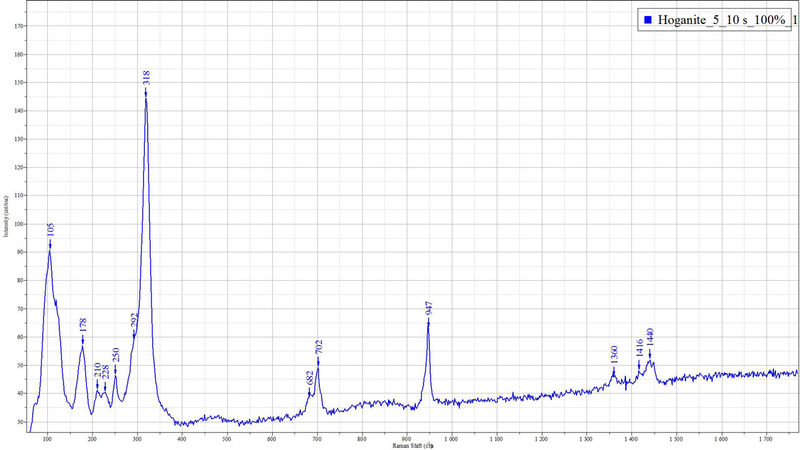
|
| Description: |
|
| Viewed: |
34479 Time(s) |
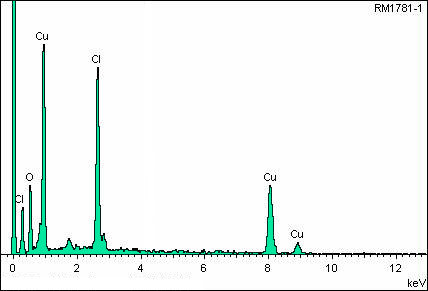
|
| Locality: | | Bou Nahas Mine, Oumjrane mining area, Alnif Commune, Tinghir Province, Drâa-Tafilalet Region, Morocco |  |
|
| Description: |
| Bou Nahas mine from Afilou N'Khou mine. (Febr. 2018). |
|
| Viewed: |
34493 Time(s) |
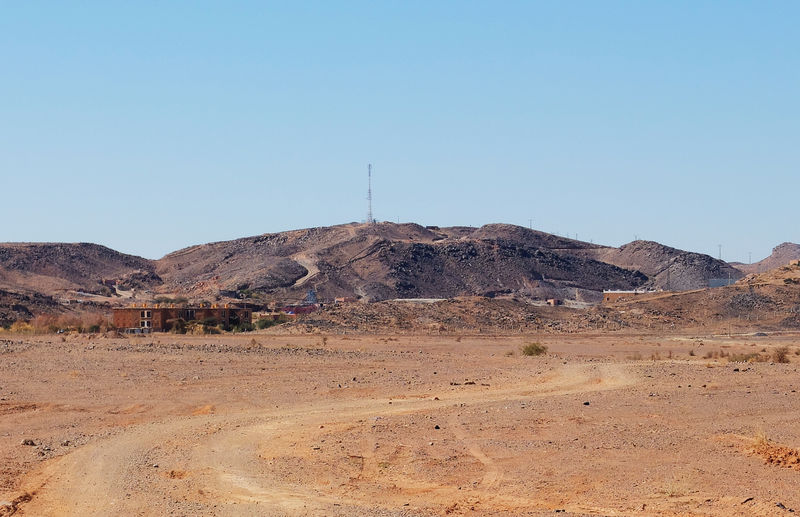
|
|
|
| Back to top |
|
 |
Cesar M. Salvan
Site Admin
Joined: 09 Jun 2008
Posts: 127
Location: Alcalá de Henares



|
 Posted: Feb 28, 2018 10:08 Post subject: Re: A new find: Hoganite from Morocco Posted: Feb 28, 2018 10:08 Post subject: Re: A new find: Hoganite from Morocco |
|
|
| James wrote: | | I think we have to assume that they are not natural. |
Indeed. I'll put it in this way:
1- If the samples were natural, it would defy what we know on the biogeochemistry of acetate. As a scientist, I do not like to affirm categorically, but 'big claims require big evidence'. Unless there are compelling evidence of its natural origin, the samples should be regarded as synthetic (fake or accidental, this is a different topic).
1.1- The specimens look synthetic, the synthetic origin is consistent and if you try to replicate the synthesis (as I did, not big deal, everybody can do it), you get the same type of specimens (same crystal sizes, same abundance and shape etc)... so..what else?
2- The coexistence of carbonates is NOT a proof of its natural origin. Copper acetate and copper carbonates are compatible. As good archaeologists well know, the formation of patinas, corrosion and crystals of double salts copper acetate-carbonates and mixed acetate and carbonates in copper and brass materials under the influence of emissions from decaying organic matter is common. In the samples I analyzed, the crystals were covered by carbonated patina and if you make synthetic hoganite in didactic experiments, you will find easily the cocrystallization of acetates and carbonates. It is merely an interplay between pH, concentrations, temperatures and time.
2.1-The presence of chloride reported by Joan Rosell is consistent also, even not knowing the history and context of the sample. For example, a classic recipe for preparation of copper acetate crystals use a mixture or table salt and vinegar to facilitate the corrosion of copper. One can imagine cotreatment or the use of a mother solution with chlorides, result of cleaning specimens with hydrochloric acid...who knows.
3- To sell these Moroccan samples as natural is unethical in some ways or require an ignorance plea.
|
|
| Back to top |
|
 |
|





